- The updated Tesla Model 3 is a major improvement over its predecessor.
- The glass roof lets in too much sun and the turn signal buttons are distracting.
- Tesla's so-called Full Self-Driving tech is improving.
2024 Tesla Model 3 Long Range: Here's What We Think After a Year of Ownership
The new Model 3 is a big improvement over the old version, but some quirks and issues remain
Last year, the Tesla Model 3 got its first significant update since the EV launched in 2017, and we added a Long Range version to our One-Year Road Test fleet. (We also got a Model 3 Performance, but that one's sticking around for a bit longer.) The Highland model, as Tesla fans call it, features several updates such as new headlights and taillights, more sound-deadening materials for the cabin, a rear touchscreen, and the elimination of the turn signal stalk and shift lever — something we really, really hate. Even so, these changes marked enough of an improvement for us to name the Model 3 the Edmunds Top Rated Electric Car for 2025. So, what do we think of our award winner now that one year of ownership is coming to end?
First impressions were positive
"Just an unbelievably powerful update across the board," said Andy White, senior director of social media. "The 'Highland' Model 3 refresh has improved the car markedly across all aspects: handling, comfort, range, acoustics, build quality, technology. For the money, you cannot buy a better electric vehicle."
Other staff members agree. "This car is frustratingly good," said script writer Duncan Brady. "Every Model 3 I had driven or ridden in, to this point, had been loud, stiff and cheap, saved only by their impressive range and an accessible price point. The 'Highland' revision is a dramatic improvement. It is much quieter, the damping is more refined and the materials feel higher in quality."
We also loved the way it drove. Even in Chill mode, tthe Model 3 has plenty of power to get up hills or pass other vehicles on the road. The default regenerative braking setting is probably the smoothest we've experienced in any EV. The ride quality is probably the best we've experienced in a Tesla in recent memory. It is a night-and-day improvement over the 2020 Model Y Performance we had in our long-term fleet.
"The noise management in this car is very, very, very good," said video manager Will Kaufman. "Tire, road and wind noise are really muted, to a degree that a lot of luxury cars I've been in can't match. There's a stretch of my commute where construction moved the lanes over by about a foot, and the spot where the paint along the boundary of the road was scraped up is now a miles-long strip of rough asphalt that, in most cars, makes the tires absolutely sing. It's an exquisite form of sonic torture, and you can watch as every car crowds the lane to the right to try and stay off that strip. I tried it out on the Model 3, and while there was still audible noise it was dampened to the point where it was not only tolerable, I didn't even have to turn my podcast up."
"I heard how much better the fit and finish was, but I was still really impressed by how far Tesla has come in that department," said vehicle test editor Reese Counts. "Build quality in other Teslas we've owned has varied greatly, but none of it was what I would consider good. This car finally feels worth the money. I still have some issues with the actual layout, but at least I can't stick my finger behind interior panels anymore."
A glass roof seems cool — until it's not
We think we know why Tesla added cooled seats as a standard feature on this updated Model 3. Due to the glass roof, they're necessary because the cabin gets so hot in the summer months. When you hop inside the car on a hot day, having the air conditioning at full blast (and cooled seats at max) is a must. It takes roughly 25 minutes or so to bring the cabin to a comfortable temperature. It's ironic that a company that seeks to reduce greenhouse gases ends up creating a greenhouse effect through the glass roofs on its vehicles. This, in turn, causes you to turn up the A/C higher, which then takes a toll on your driving range.
"The glass roof is stunningly awful and, on its own, should be a complete deal-breaker for anyone who lives in the American Southwest," added Kaufman. "Today, the temperature in Los Angeles was a pretty moderate 80 degrees Fahrenheit, but by the middle of my commute, the glass roof panel was uncomfortably hot to the touch and radiating enough heat that the top of my head was starting to overheat. The AC was doing its (loud) best to moderate the cabin temperature, but unfortunately, it couldn't blow directly at my baking dome. In mid-summer, the temperatures can break 110 here, and short of sticking an ice pack on my head, I don't know how on earth the car is going to be comfortable to sit in. I'm honestly not even sure the A/C will be able to keep up at that point."
The roof tint also has an unintended side effect. "Visibility out the back is not the best," noted director of written content Brent Romans. "I've found it's hard to fully see what's behind me through the rearview mirror because of the rear window's tinting at the top and the short overall view you have through the window."
If it ain't broke, let's fix it
One of the most polarizing aspects of this vehicle is Tesla's cost-cutting decision to eliminate the physical turn stalk and shift lever.
Let's start with the blinker stalk. The signals are now two buttons located on the left of the steering wheel. At best, it takes time to get used to them, and at worst, they could be an unsafe distraction.
We can already predict what a Tesla fan would say about this: "This is a dumb complaint. If you owned the car, you'd get used to it." Let us pose this question in return: How long does it take to unlearn a habit you've been doing for 30 years? One person on staff, who's owned two Model 3s, also agrees this feature is dumb. We've written more about it here, along with a proposed solution.
"The turn signal buttons are not good, and it's not just a matter of 'getting used to it,'" said Kaufman. "They're small buttons with small activation areas and no real tactile differentiation from each other or the panel they're on. I spent the first 10 minutes of my commute trying to swipe a stalk that wasn't there, sure, but then I spent the next hour regularly missing the button I was trying to push and having to look away from the road to make sure I hit it properly. That's not innovation; that's not forward-thinking — it's just plain bad design."
As for the gear shifter being relocated to the touchscreen, opinions were split. Picture your typical automatic shift lever. To put it into ridve, you slide it down, toward you. To reverse, you slide the lever up (assuming you were in drive). This is the opposite of how it's done in the Model 3, which has caused many of us to engage the wrong gear.
"I'm going to say something exceptionally controversial: I like the touchscreen shifter," said Kaufman. "It's really easy and intuitive and actually less awkward than rotary shifters or even most push-button setups. The caveat is that I hate the backup shifter. The capacitive buttons on the roof are hidden until you touch them, which means the only times I've tried to use it I wound up selecting the wrong gear just to get the buttons to appear. That's dumb."
So-called Full Self-Driving starts to mature
"I can't think of a single car I've driven recently that has a more frustrating automated advanced driverassistance system than the Model 3's 'Full Self-Driving,'" said manager of written content Cameron Rogers. "This is the thing that Tesla diehards salivate over? Maybe it works perfectly on more rural highways, but with crawling Los Angeles traffic, its flawed logic causes far more stress than relief."
"My biggest problem with Full Self-Driving [FSD] is that it initiates automatic lane changes far too frequently and its logic isn't bulletproof. It works like this: If you're traveling below your target speed because of traffic, and the car determines that other lanes would allow for faster travel, it will signal an alert immediately before it starts executing the lane change. On multiple occasions, I had to pull the Model 3 back into its original lane because a vehicle was approaching quickly and the Tesla's sensors either hadn't recognized the approaching car or clocked its higher rate of speed. I experimented with changing the FSD setting so that automatic lane changes were kept to a minimum — a setting that resets every time you turn the car off — but it still attempted a lane change every few minutes."
"Another issue: If you give more than the mildest tug at the steering wheel (like to pull the automatically lane-changing Model 3 back into its lane), the entire FSD system deactivates, including adaptive cruise control (ACC). Imagine being behind a Model 3 when it starts to change a lane, then it's pulled back into the original lane, at which point it begins to stop because ACC deactivates and regenerative braking kicks in to slow the car down. Then the Model 3 driver has to immediately jump on the accelerator to get back up to speed. It's unbelievably frustrating."
"It's not quite the future yet," said Romans. "You still have to keep your hands on the steering wheel because it's still a Beta version. Plus, I still feel compelled to fully pay attention and be ready to react quickly to a possible situation because I don't fully trust FSD. I might as well just drive at that point. It's hard to justify paying thousands of dollars for something that is tantalizing but still not quite reality yet."
Roughly six months later, senior reviews editor Brian Wong noticed an improvement in the FSD software, as it had transitioned from "FSD (Beta)" to "FSD (Supervised)."
"We have had a lot of previous experience with the old FSD Beta system and found it to be overly ambitious and unsure on its feet," said Wong. "On the highway, Tesla's systems have always been great but in the city where it has to navigate stoplights, stop signs, people crossing, construction zones, etc., it was abysmal and downright dangerous."
"However, the update has flipped that completely. Enter a destination into the navigation, activate the system via a prompt on the screen or the steering wheel controls, and off you go. It no longer requires you to keep your hands on the wheel provided you are actively paying attention. That's where the 'Supervised' part comes in, as the system uses the in-cabin camera quite rigorously to monitor driver attentiveness. I was able to drive home from the office through traffic and not touch the wheel until I needed to park in the garage."
"The system purposely incorporates human driving behavior into its processes to make it more comfortable. For example, making an unprotected left onto a busy street, the car crept forward 8-10 feet at low speeds like a person would, even though I could see on the screen that the sensors already knew it was clear. That was just for me."
"Overall, I found FSD (Supervised) to be very impressive."
EV range does not disappoint
The 2024 Tesla Model 3 has an EPA-estimated range of 341 miles. During Edmunds EV Range Test, where we drive the cars in a mix of 60% city and 40% highway driving until they have roughly 10% battery remaining, we observed 338 miles. We also observed average lifetime energy consumption of 22.2 kWh per 100 miles, which is well below the EPA's 25-kWh/100-mile estimate.
The bottom line
Despite having its share of polarizing features, most of us agree that the 2024 Tesla Model 3 is a significant improvement over its previous incarnation.
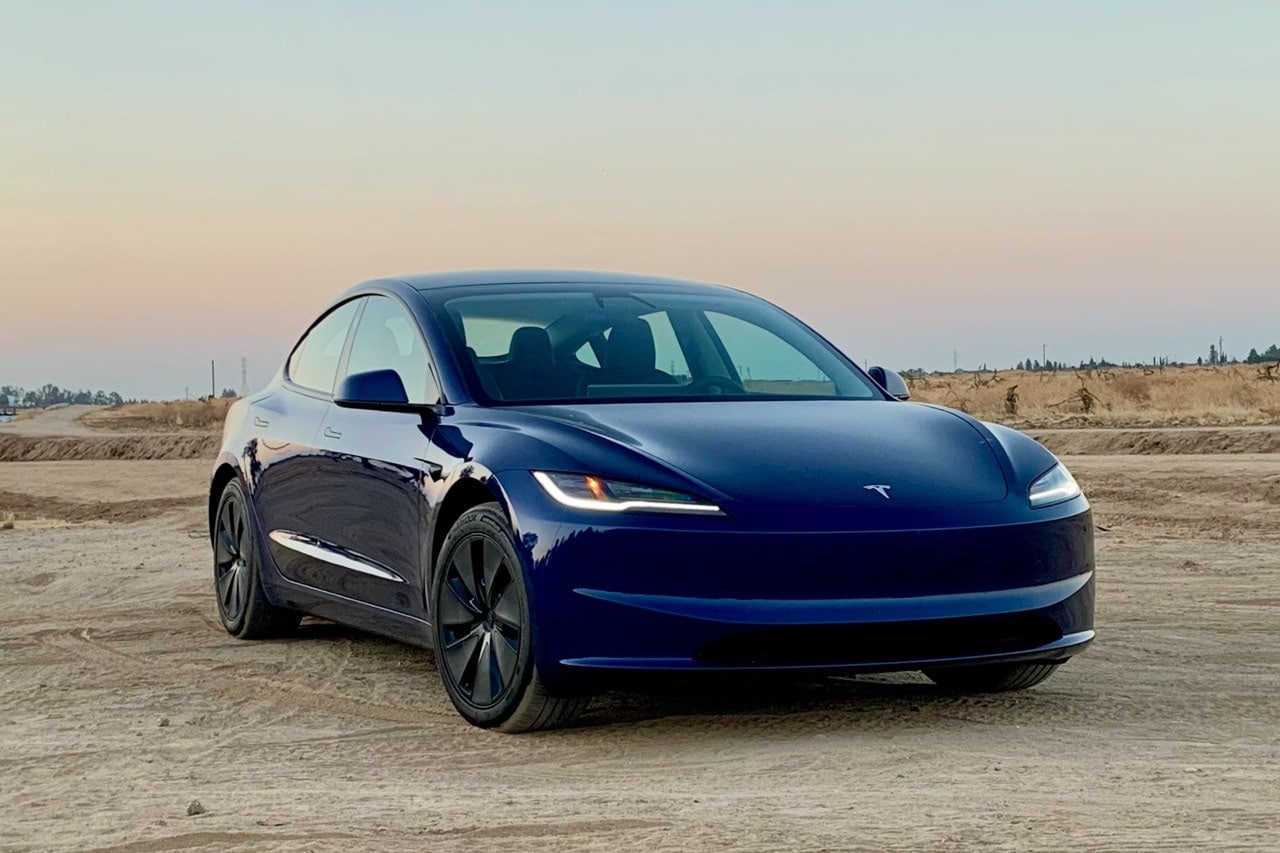
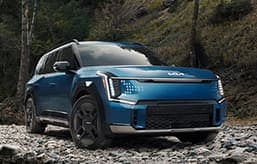


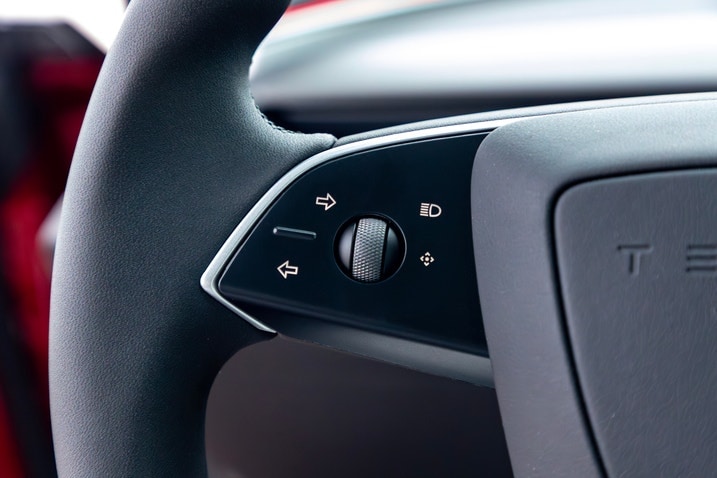
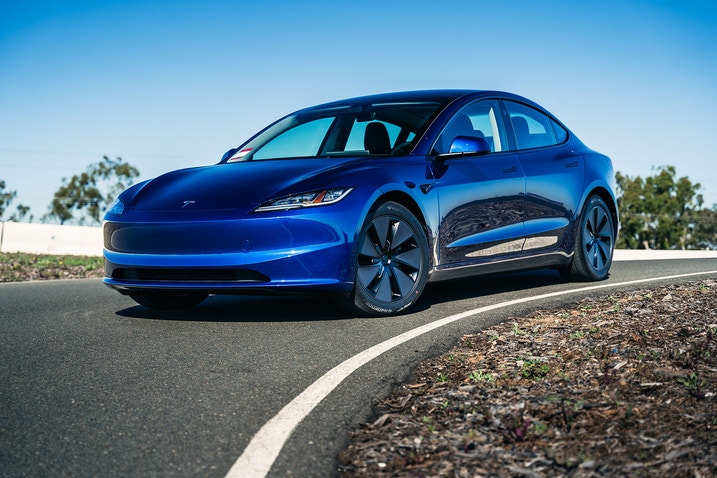
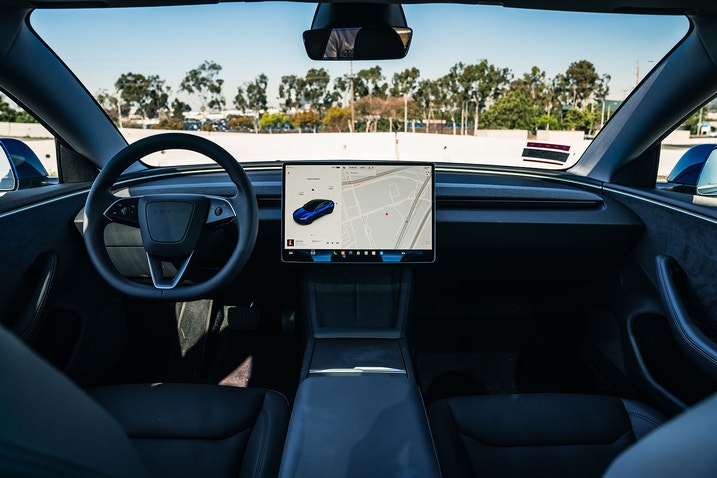

 by
by  edited by
edited by